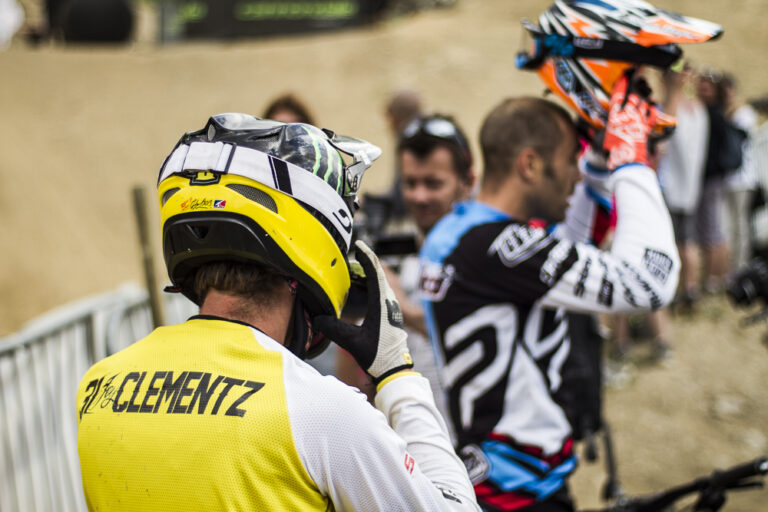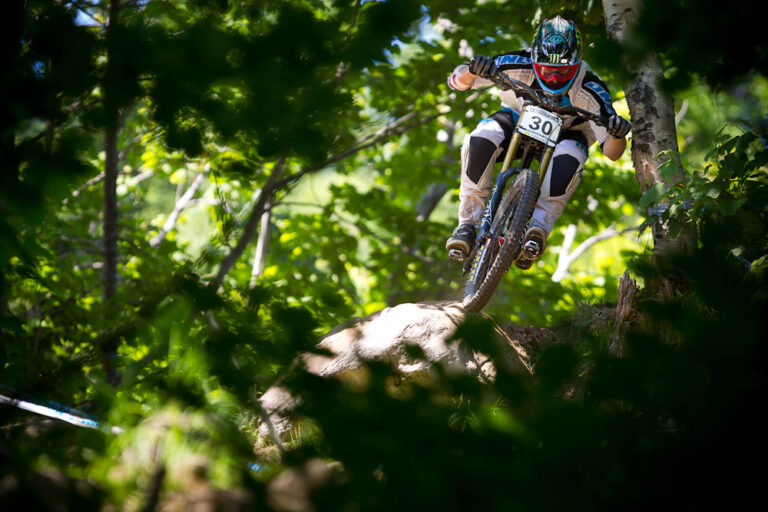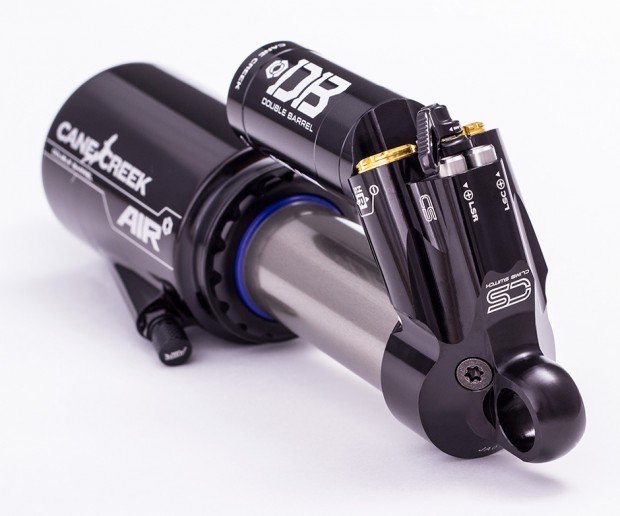
I’ll start at the beginning for those who’ve been living in a Double Barrel free cave…
In 2005 Cane Creek first introduced their coil sprung Double Barrel shock and to say it re-wrote the rule books on rear shock performance is a massive understatement. The twin tube design allowed Cane Creek to offer external adjustments for high and low speed compression, and high and low speed rebound damping. These adjustments also operate truly independently of each other. To achieve this level of adjustability on a rival shock you’d have to open it up and tinker inside, which is not something that many riders can do, plus it can’t exactly be done out on the trail and tweaked easily.
Overall the Double Barrel offered incredible grip and control which could often completely transform the way in which a bike performed. At first these shocks were only really fitted to DH bikes, but it wasn’t long before we realised the benefits that they could bring to a trail bike. It’s not exaggerating to say that we’ve even had some DB equipped trail bikes that have outperformed many DH bikes fitted with lesser shocks. It simply comes down to the control that the DB offers.
Obviously fitting a weighty coil shock to a trail bike wasn’t a compromise that many were willing to make so a few years back Cane Creek finally introduced an air version of the Double Barrel; the DBair. Once again this changed our perceptions of how well an air shock can perform and it transformed many a trail bike just like the original coil version had transformed so many DH bikes.
When it came to trail bikes though there was one thing that some riders felt was missing, and that was some form of climbing mode. With the ability to fine tune the low speed compression and rebound damping you could tune the shock to improve even the worst pedalling frame designs, but this always came at the expense of grip when you started heading down again. Basically you had to decide where you wanted to compromise, was it in descending prowess, or was it in climbing efficiency? This new CS ‘Climb Switch’ puts an end to that though.

With the new CS version of the DB Cane Creek have added another two low speed damping circuits, bringing the overall total up from four to six. The four previous circuits (LSC, LSR, HSC & HSR) work in exactly the same way as before, but they are now joined by an extra LSC and LSR which are engaged via the new ‘CS’. With the switch turned off your shock works exactly like a non-CS shock, but when you switch it on it engages the two new circuits, which in turn increases both the low speed compression and low speed rebound damping.
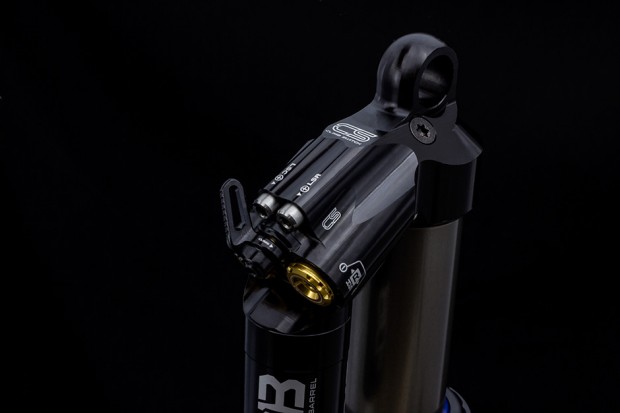
What this means is that you can run your optimum settings for descending duties, and then when you’re climbing you can easily increase the low speed damping to improve pedalling performance. Now you might be thinking that this sounds awfully similar to all the climbing modes that we’ve seen on other shocks in the past, but it isn’t due to one crucial difference. That difference is that everything that has come before has purely relied on increasing low speed compression damping, and not both compression and rebound. That is more of a big deal than you might at first think as to get the same kind of pedalling efficiency by just altering the compression you have to increase it considerably more than you would if you altered rebound at the same time. The consequence of having to increase it more than is absolutely necessary is that you lose out on grip. With the Cane Creek CS system you still get a fully active shock with incredible grip. In fact you still get the kind of grip when climbing that you get from a DB when descending.

That last sentence might sound impossible seeing as you have increased the low speed damping (and as I said before that reduces grip), but because you are climbing the shaft speeds of the shock are lower and so the slight increase in low speed damping does not detract from the suspension performance. Yes if you engage the switch when descending you will notice a marked drop in grip, but that’s because the shaft speeds are now higher again. As for the amount of increase in low speed damping when you engage the switch, this is set internally (and can be adjusted internally) and tailored for each specific frame design. It’s important to note that the switch doesn’t just switch to a standard setting though, instead it increases the damping relative to your main settings. Also, it’s not just a case of on or off because as you move the switch from the off position it gradually increases the low speed damping until you reach the maximum predetermined change at the far end of the levers travel. If that maximum change isn’t enough for your needs (it should be though) then any Cane Creek service centre will be able to increase it internally.

So, the killer question…does it work? Well I’ve been lucky enough to have been testing a prototype version of this shock and the short answer is most definitely yes. First impressions were that it was very subtle compared to other designs, so much so that I wasn’t sure if it was actually making that much difference at first, especially as I was testing it on an Ibis Mojo HD-R, a bike that climbs well as it is, but it wasn’t long before I started to realise that it was this subtlety that made it so special. If you really start to try and hammer up a technical climb with the CS turned off there is definitely a fair bit of unwanted movement going on, but then when you turn it on everything is far more composed, there’s no annoying ‘bob’, yet you still have incredible levels of grip and suspension that works every bit as well as it should do. It just doesn’t seem like you have to compromise at all, it really is bloody impressive when climbing, and of course when you head down again with the CS switched off you’re again treated to the kind of composure and grip that most other shocks can only dream of. Even when running the HD-R in 130mm travel mode it never felt phased even when giving it some serious stick on beaten up DH tracks.
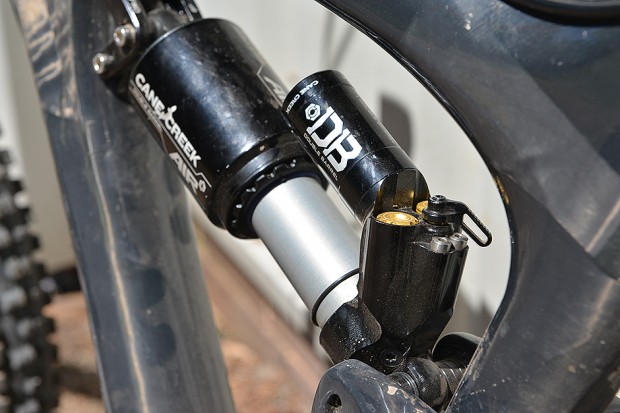
Downsides? Well apart from a slight increase in cost compared to a standard DB (which will still be available) there are none as far as I am concerned. I mean it works every bit as well as we’ve come to expect from a DB when heading downhill, and then at the flick of a switch it provides you with the kind of climbing performance that you’ve previously only dreamt of. Oh, and there’s another added benefit, and that’s that all the damping adjusters can now be tweaked with a single 3mm allen key rather than a selection of spanners. Personally I am also totally happy having a simple, reliable and easy to use lever on the shock rather than yet another bloody lever on my bars, but I am sure some riders will be saying ‘but I want a remote switch’, and in answer to that I am equally sure that Cane Creek are working on such a thing.
Finally, for those riders who want the ultimate suspension performance of a DBcoil it also looks like Cane Creek will be adding a CS version of that shock too, which should make pedalling your bike up the hills a little easier no matter how much it weighs.
Anyway, here are the tech spec’s of the new shock and Cane Creek’s promotional video…
- Weight: 509g (weight varies by size)
- Damping: Twin Tube independent compression and rebound in two high-speed and four low-speed damping circuits.
- Adjustments: Air spring rate, High speed compression, Low speed compression, High speed rebound, Low speed rebound, Climb Switch On/Off.
- Finish: Anodized and laser-etched.
- Lengths: 190 x 50mm (7.5″ x 2.0″), 200 x 50mm (7.87″ x 2.0″), 200 x 57mm (7.87″ x 2.25″), 215 x 63mm (8.5″ x 2.5″), 222 x 63mm (8.75″ x 2.5″), 222 x 70mm (8.75″ x 2.75″), 240 x 76mm (9.5″ x 3.0″), 267 x 90mm (10.5″ x 3.5″).
- Can Sizes: Standard (all lengths), Extra Volume (200, 215, 222, 240)
- Mounting Interface: High performance low friction bushing, 1/2″ universal axle.
- Manufacturing: Hand built in Fletcher, NC, USA.
- Availability: September 2013


